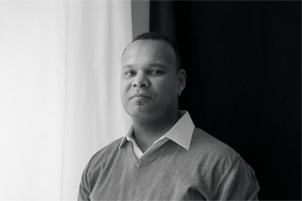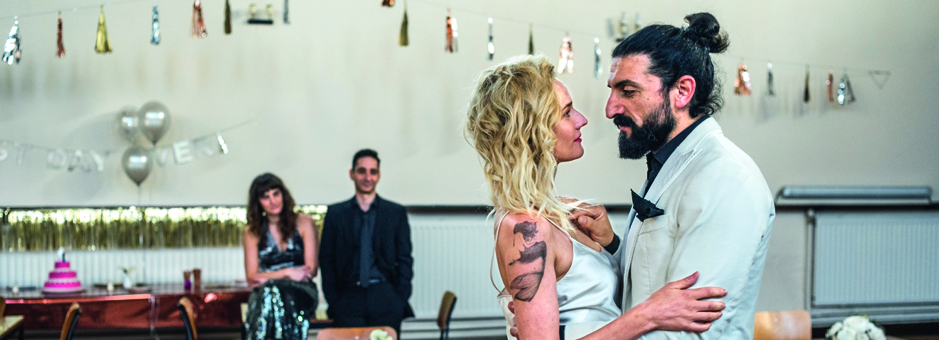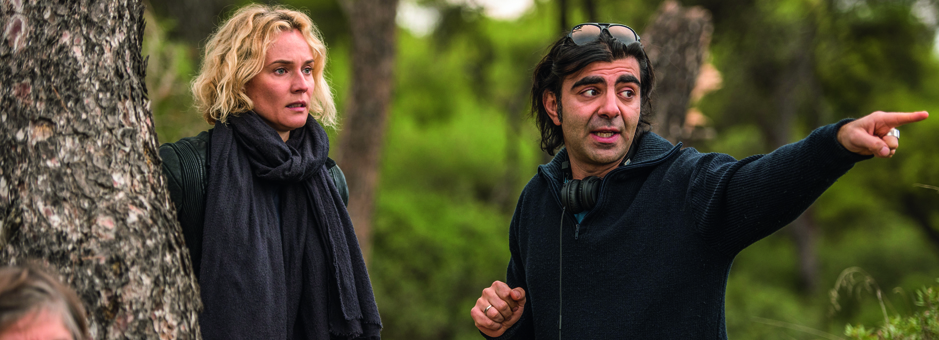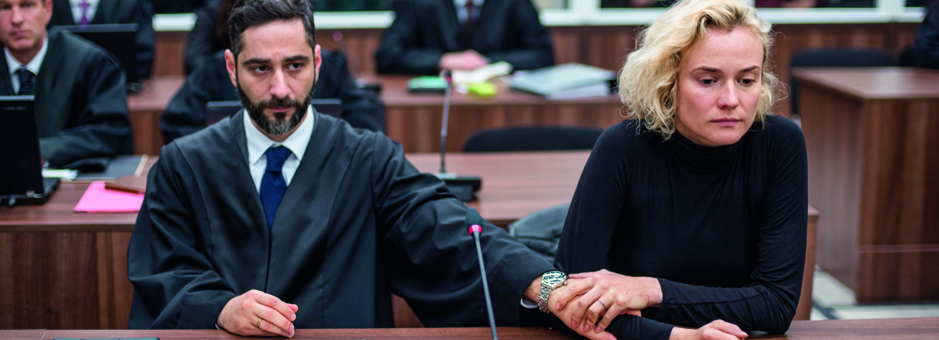Meet The Colourist
Ronney Afortu
Senior DI Colourist, Optical Art, Hamburg
Ronney Afortu was born in Chicago, but moved to Germany at a young age. He is now a colourist at Optical Art in Hamburg, and has worked on the Oscar-nominated movie Mongol, with Oscar-winning director Bille August on Night Train to Lisbon, as well as the recent Golden Globe-winning movie Aus dem Nichts (In the Fade), a crime drama starring Diane Kruger and Denis Moschitto. Ronney thinks HDR, and wider colour gamut, is the technology to watch for the future and, outside of the dark room, he enjoys running and spending time with his daughter.
How did you become a colourist?
After school, I started studying media engineering. But I also worked with a production company specialising in advertising. Having been on the shoot of a Coca Cola commercial, I was invited to join the director for the telecine. I knew right away that was what I wanted to do.
The first experience of colour grading for cinema – on a Thomson Specter with Pandora Pogle controller – was at VCC in Hamburg, the former parent company of Optical Art. I asked them if there were any opportunities to train as a colourist with them. And that was it. I threw myself into working to become a colourist.
What sort of projects do you work on?
At the time I joined them, Optical Art was a pioneer in digital intermediate. So from the start I have worked a lot on movies, and that is still what I do the most. But I also grade television features.
The boundaries between the two have become much more fluid in recent years. Television has become much more sophisticated. You meet the same DoPs and directors on movies and television. The only difference is that in television you will have less time!
How did you move to Baselight?
When I started out as a colourist, the Specter/Pogle combination was seen as state of the art for 2K grading work, but it also represented a challenge in DI for movies. It was difficult to manage colour spaces when writing back to film.
Frank Hellmann, the DI supervisor at Optical Art, learned about an outfit in London called Computer Film Company. They had developed a system that allowed you to communicate with the lab in printer lights. It transformed the way we worked – we were convinced that this was the right way to go.
That system developed by Computer Film Company was spun out into a new company, FilmLight, and the grading platform became Baselight. Optical Art decided to buy a Baselight system, and we became beta testers very early on. We still keep that serial number 0001 on one of our machines, though it has been upgraded a few times to the latest hardware.
During the beta test phase we got used to finding something we needed to do, emailing FilmLight in London, then just a few hours later receiving an email with a link to the software upgrade. That level of support from FilmLight – now, of course, with a much more sophisticated and stable system – is still every bit as good.
We have much less need to get in touch with FilmLight now, but we know the support is still there when we need it. Most importantly, the features inside Baselight are clearly driven by colourists. This is not a fixed system – it grows as we develop new requirements.
Though I started in telecine, today we rarely see film because most of the labs in Europe have gone. Film meant many days of struggling to get a perfect print. So in that way I don’t miss it. In digital, you get a new [sensor] chip every couple of months. Kodak and Fuji would produce a new stock every few years. So we have constant improvement and new opportunities.
I had worked with director Fatih Akin and DoP Rainer Klausmann on a couple of movies previously, so the working relationship was very close right from the start.
In the Fade is a complex, dark movie. Each of its three acts has a distinctly different feel to it, and it was important for everyone to set these looks before the first day of shooting. This was one of those rare projects when the production company talked to us early to determine how best to do it.
Rainer is a true DoP – he lights really well. We ran six to eight tests to get the right kit, which allowed us to agree on how to get the looks in each section of the movie. But both Rainer and Fatih are quite ‘analogue’ thinkers: if you can do it on set, you should do so.
The tests went all the way to make-up. The director wanted lead actor Diane Kruger to look “not so good” in some of the more harrowing sequences. They wanted to ensure that every detail of the performance was captured.
What was the workflow for the movie?
In the Fade was shot using ARRI Alexa cameras with wide gamut and that allowed for a high quality DCP finish.
Because of the way that Fatih and Rainer work, I was able to handle the dailies as well as the final grade. I used FilmLight’s Daylight system. This has the same grading toolkit as Baselight, and allows grades to be exported as BLG metadata so nothing is lost.
Fatih and Rainer prefer to watch dailies in the editing room – the old fashioned way. On set they liked to concentrate on shooting, having faith in everyone else in the team. Daylight suits this workflow really well in creating graded dailies for the editing department, that was also located at Optical Art, as well as giving me the same starting point in the final Baselight grade.
Did the movie offer up any challenges?
Given that a lot of the “effects” were done in camera, and we had seen everything in the dailies, by the time of the final grade we were pretty much on top of everything.
An interesting part of the movie is the big scenes in the rain. Most of the tension was created with lighting, but Fatih and Rainer encouraged me to enhance it. They wanted the audience to really feel getting drenched by the rain.
What about HDR, 4K and other trends in technology?
When I sit in the cinema, I don’t usually see pixels. So more resolution is not important to me. HDR and wider colour gamut is what is exciting – provided we can get that all the way to the big screen.
That has the most impact I have seen over the last couple of years. You cannot compare it to film, but it has a big impact on DoPs, in how they set up a shot, how they light it.
Say the script says the villain moves out of a bar. Normally you could cut from interior to exterior. In HDR, you could simply follow the villain. Or the camera could stay inside and still see what is happening outside. This is a big shift for writers as well as for directors and DoPs.
What do you do when you are not grading?
I love to be outside, because I spend my working time in the dark. I do a lot of sport, but most of all I spend time with my daughter.
Join In
If you want to participate in our MTC programme, we'd love to hear from you. Contact:
Alexa Maza
e: [email protected]

“In the Fade is a complex, dark movie. Each of its three acts has a distinctly different feel to it, and it was important for everyone to set these looks before the first day of shooting.”
Details
Colourist: Ronney Afortu
Role: Senior DI Colourist







